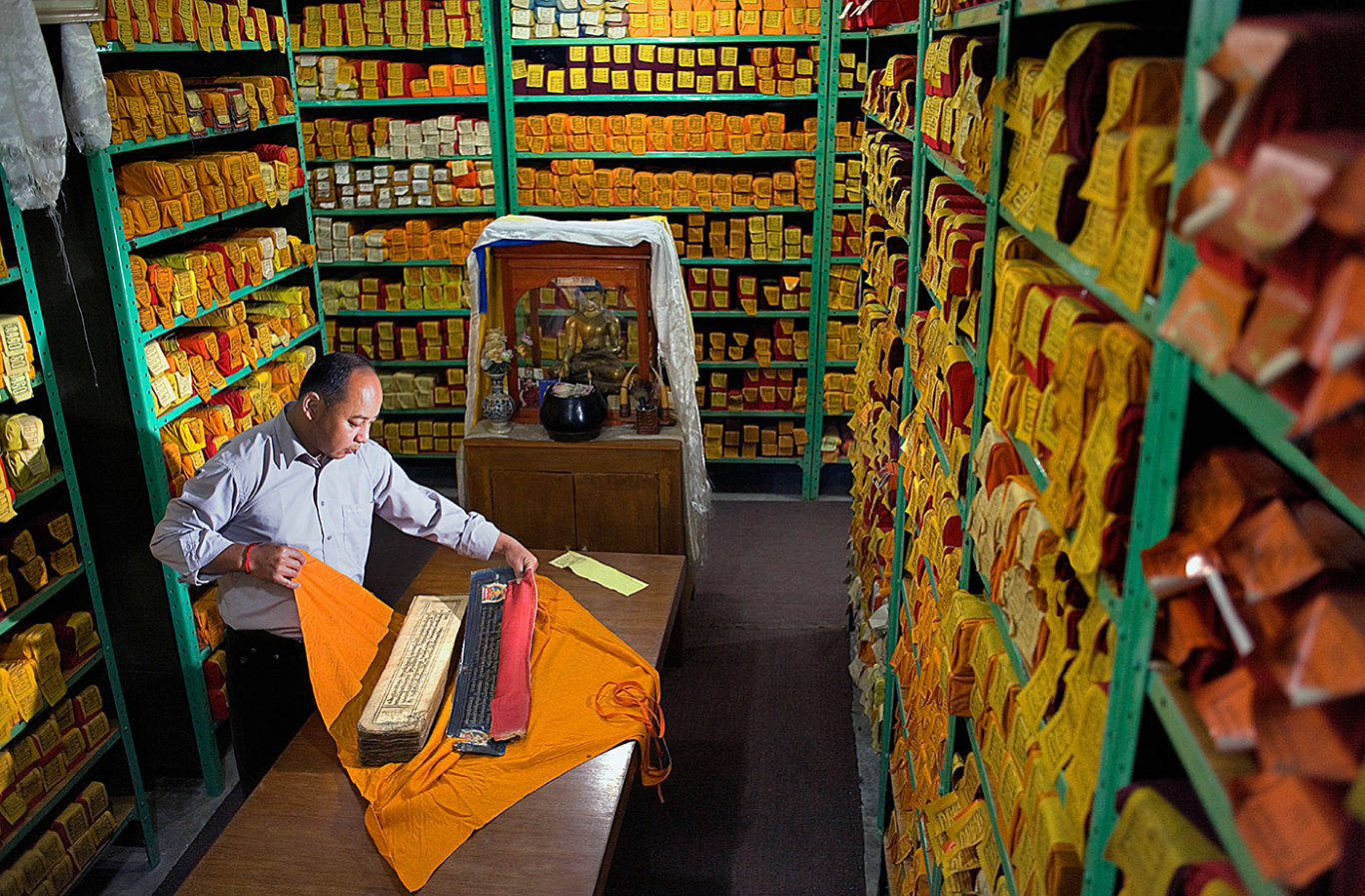What are some important texts in Tibetan Buddhism?

One of the many volumes of the Kangyur (“Translated Word”), one of the two Tibetan Buddhist canonical texts, is conserved at the Library of Tibetan Works & Archives in Dharamsala, India, the home of the Tibetan exile community in India. | Lucas Vallecillos / VWPics / Alamy Stock Photo
The Tibetan Buddhist literary tradition is vast. It includes a wide variety of early Buddhist scriptures, later Mahayana sutras, tantric texts, practice and ritual guides, autobiographies, and commentaries.
Between the 8th and 14th centuries, Tibetan scholars translated an amazingly broad array of Indian Buddhist texts into Tibetan. This accumulation was almost miraculously prescient, as in the 12th century, many Buddhist texts were lost when invading armies destroyed Buddhist temples and monastic universities in India. In fact, many Mahayana Buddhist works that were originally in Sanskrit survive only in Tibetan translation.
Perhaps the most important works are the Buddhist scriptural texts called the Kangyur and the commentaries and treatises known as the Tengyur. The Kangyur (“Translated Word”) is made up of some 1,169 texts attributed to the Buddha himself, with nearly all of the original texts being written in Sanskrit. The Tengyur (“Translated Treatises”), is made up of more than 4,000 commentaries and treatises by Buddhist masters, and here again, the vast majority of the original texts were written in Sanskrit.
Besides these canonical texts, Tibetan masters wrote important commentaries on the sutras and tantras, as well as works describing Buddhist practices for both monastics and laypeople. Among the most well-known of these are the terma (treasure texts) attributed to Padmasambhava (Guru Rinpoche), the 8th century south Asian master who helped bring Buddhism to the Himalayas. Tibetan Buddhists believe Padmasambhava hid these texts for future masters called tertons to find at the right time.
Bardo Thodol, or Book of Liberation Through Hearing in the Bardo, often known by the mistranslated title Tibetan Book of the Dead, is the most famous treasure text. A guide to the experience of death and rebirth, it was found and published by the terton Karma Lingpa (1326–1386).
Another important work is The Lamp for the Path to Enlightenment, by the great Indian scholar Atisha (982–1054). This is the source of the Tibetan Buddhist lamrim, (stages of the path) literature, which ties together the various threads of Buddhist teaching transported to Tibet. Building on Atisha’s text is The Great Treatise on the Stages of the Path to Enlightenment (Lamrin Chenmo) by Tsongkhapa (1357–1419), a broad collection of oral instructions that present a comprehensive program for spiritual transformation.
The Way of the Bodhisattva by the Indian Buddhist master Shantideva (685–763), translated into Tibetan in the 9th century, is the authoritative guide to the bodhisattva path. The 37 Practices of a Bodhisattva by Gyelsay Togmay Sangpo (1295-1369) describes a fearless path of love and compassion accessible to monastic and lay Buddhists alike.
The Eight Stanzas of Thought Transformation by Langri Thangpa (1054–1123) and The Seven-Point Mind Training by Chekawa Yeshe Dorje (1101-1175) are two brief masterworks on how to transform one’s entire life by training the mind in love and compassion.
The Life of Milarepa and The Hundred Thousand Songs of Milarepa by Tsangnyon Heruka (1452–1507) follow the singular story of Milarepa (1040–1123), whose journey from wealth to poverty to black magic to murder and finally to the Buddhist path and enlightenment demonstrates the redemptive power of the dharma.

Tricycle is more than a magazine
Gain access to the best in sprititual film, our growing collection of e-books, and monthly talks, plus our 25-year archive
Subscribe now